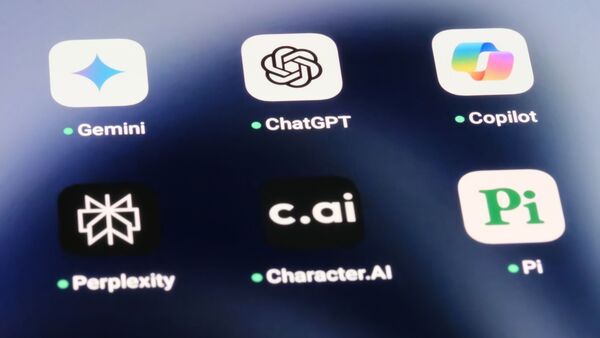 Opinion
Opinion
Who’s making money from GenAI? Big Tech, consultants or data centres?

Summary
- Big Tech stocks have taken tumbles amid worries of investments going into GenAI with little clarity on profitability. The GenAI stack has multiple layers that include firms which make chips, processing units, language models and apps, and profits depend on the layer a particular business is in.
There has been a lot of hullabaloo lately around a ‘GenAI bubble’ that’s said to be deflating, primarily evoked by the plummeting valuations of its bellwethers: Nvidia, Microsoft and other Big Tech firms riding the artificial intelligence (AI) tiger.
Shares of Intel plunged a vertiginous 25%, Microsoft and Google both dipped on their seemingly stellar earnings reports, and even the mighty Nvidia lost hundreds of billions of dollars from the dizzying high of its $3.2 trillion valuation.
Investors got unnerved when companies like Microsoft and Google each committed to spending upwards of $50 billion every year, with a disproportionate amount earmarked for data centres and the cloud infrastructure that underpins AI. The fact that they could not present any immediate outlook of returns spooked investors, leading to a mini market crash globally.
Also read: Errors, high cost among reasons GenAI not moving beyond concept stage
Beyond the investor community, it led people to ask who was really making money from AI, if at all. In this column, let me dive into this, using a favourite software engineering term here: let us look at the Generative AI ‘stack,’ or the layers that make up this technology.
The lowest layer of the stack (let’s call it Layer 1) is formed by AI infrastructure. Infra providers include companies like Nvidia and AMD, which make the powerful graphics processing units (GPUs), which in turn make the Large Language Models (LLMs) of GenAI work.
It also has companies like TSMC, which build semiconductor chips that go into GPUs, and ASML, a maker of space-age machines that make these chips.
This layer can be seen as the shovel for the AI gold rush, and it has made the most amount of money so far. Nvidia’s earnings have grown at an eye-popping rate every quarter, and TSMC and ASML have not only assumed geopolitical significance, but also made gobs of money.
The Layer 2 above the infrastructural base is the model layer, the one grabbing all the eyeballs right now. This comprises OpenAI, Anthropic, Google, Meta and others, companies which make the LLMs that seem to do magical things for us—ChatGPT, Claude, Llama, Gemini, etc. If the infra layer spouts out money, the model layer consumes most of it.
The stratospheric costs of compute (the infra), data and talent are what compel Big Tech businesses to spend billions and smaller startups like OpenAI to ally themselves with large companies like Microsoft so that they can get the funds required to build these models. This layer is the one worrying investors, but also what is arguably building the future.
Also read: It’s swallowed billions of dollars, but has AI lived up to the hype?
Layer 3 above those models comprises development platforms, which are used by developers to build applications on top of LLMs. Usually nestled in large clouds like Azure and AWS, this is the investment that Big Tech firms make to get applications built on top of them.
Layer 4 is the application layer. This is where innovation abounds, with startups and big companies building their own focused GenAI apps on top of powerful LLMs created by companies like Meta and OpenAI. These are vertical apps, such as the GenAI search app Perplexity, advertising aid Copy.ai, presentation maker Gamma.ai, or lawyer assistant Harvey.
The money required to create these is a trifle in comparison, which has resulted in hundreds of innovative AI apps being built. But they have no safety moat, as the intellectual property mostly belongs to LLM providers, and the LLM-maker could create such apps of its own too.
The only competitive advantage in the Layer 4 market is how good your interface is and how well you attract prospective users. This layer is the future of GenAI, but currently consumes and makes little money.
Most GenAI stacks also have a cloud layer, which runs across the stack. Clouds are owned by hyper-scalars—AWS by Amazon, Azure by Microsoft and Google Cloud—which subsume many of the above layers.
The GPUs, LLMs, development platforms and applications power and run on this ubiquitous cloud, and this is what is responsible for the lip-smacking earnings of Big Tech players.
These are incestuous relationships. Microsoft has invested $13 billion in OpenAI, for instance, but all GPTs run exclusively on the Azure cloud, so Microsoft makes money irrespective of whether a customer buys GenAI from OpenAI or Microsoft.
There are two layers, however, which no stack I have seen talk about. There is a layer below the infra layer, call it Layer 0, and this is the real infrastructure that powers GenAI. This has electricity generators, water providers and data centre constructors.
The electricity needed to power data-centre behemoths will soon be more than what a Germany or Japan consumes, and the large utilities that make up this layer are raking money in too.
Finally, there is a layer right at the top, Layer 5, of consulting and knowledge firms, which have jumped on the GenAI bandwagon to buff up their own earnings.
Also read: Nvidia’s chip delay could impact Google, Meta and Microsoft, says report
BCG estimates a fifth of its revenues come from GenAI-related work (or about $2.5 billion) and Accenture claims to have booked $2 billion of GenAI revenue. As large corporations retool and redesign their workforces and organizations, this layer will grow.
Whether GenAI is making money or not, therefore, doesn’t have a binary yes-or-no answer. It depends on where you are in the value chain. It’s a ‘layered’ answer, at best.

